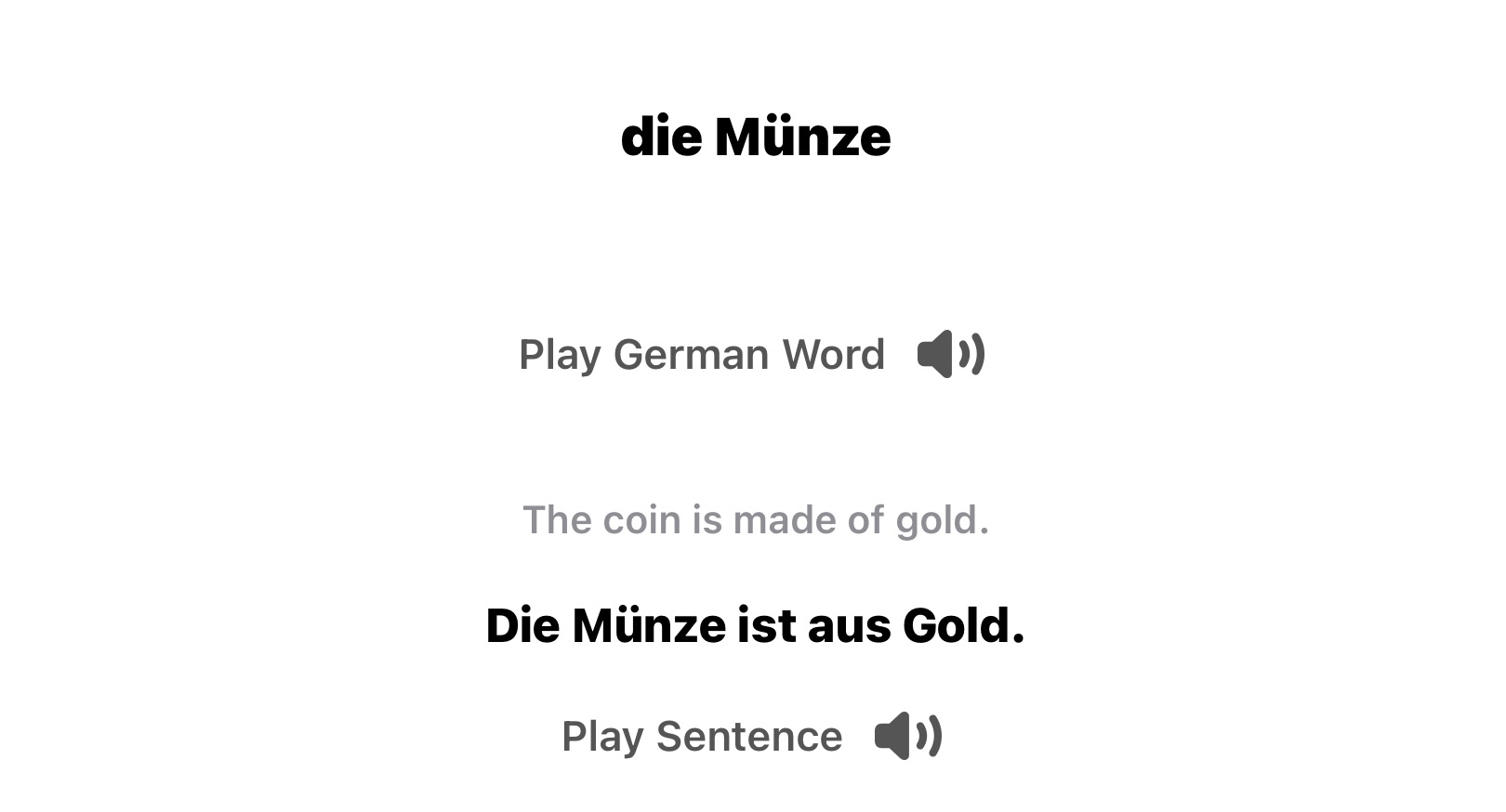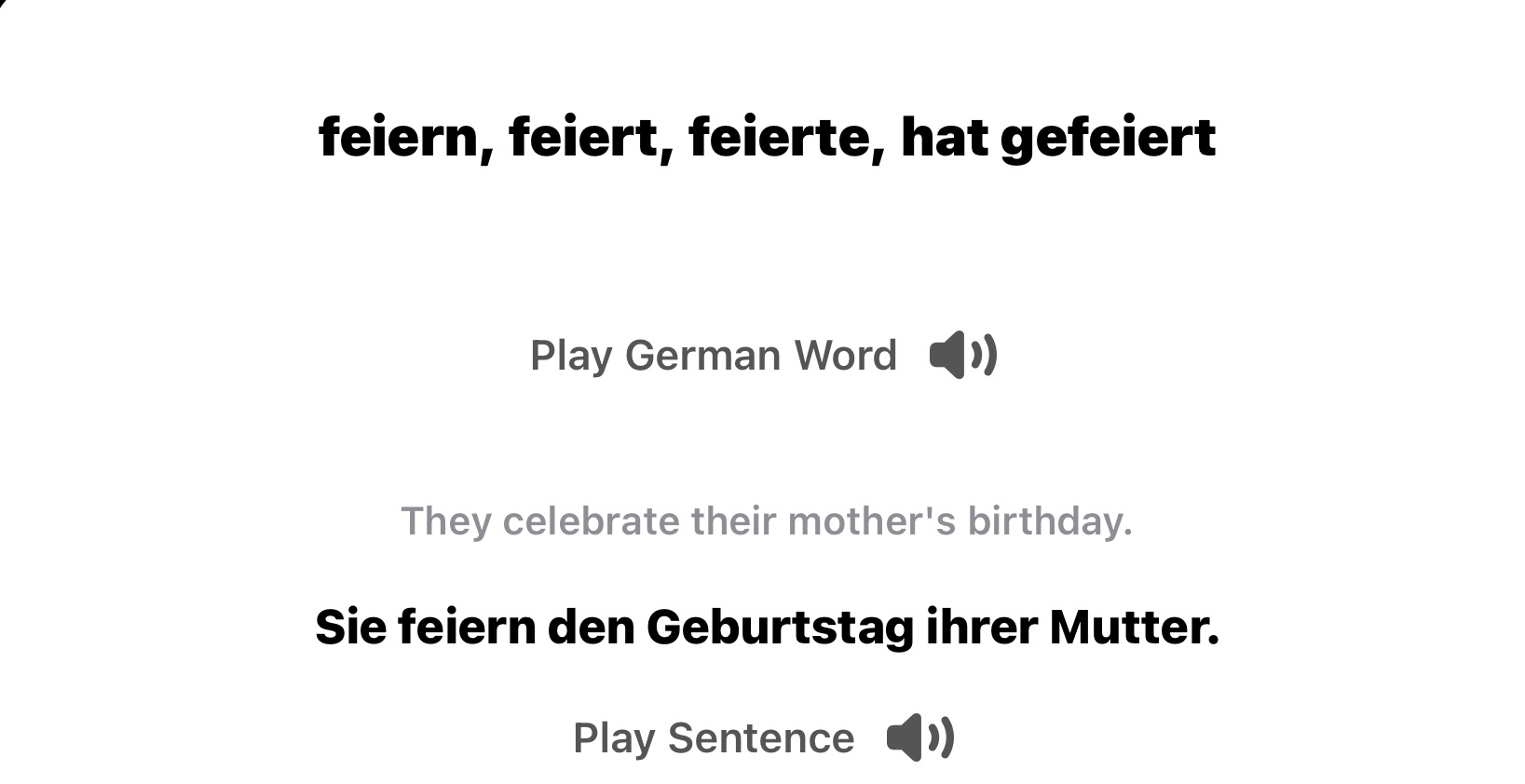As always let’s learn the vocabulary first with our FlashCards app : called FlashCards Ingoampt
Let’s see two words below , but in our app we have 1000 words include b1 German verbs and vocabulary , all with imaging technique
Understanding N-Deklination in German Grammar: A Comprehensive Guide
Mastering German grammar involves understanding various declensions, and one of the essential concepts to grasp is the N-Deklination. This declension applies to specific masculine nouns, often referred to as “weak nouns,” which require special endings depending on their grammatical case. In this article, we’ll explore what N-Deklination is, how it works, and provide a clear visual guide to help you master this concept.
What is N-Deklination?
N-Deklination (N-Declension) is a feature of German grammar that affects certain masculine nouns. These nouns require the addition of an -n or -en ending in every grammatical case except the nominative singular. Understanding when and how to apply these endings is crucial for forming grammatically correct sentences in German.
Key Rules for N-Deklination
- Masculine Nouns Ending in -e: Most masculine nouns that end in -e follow the N-Deklination pattern. Examples include:
- der Junge (boy) → becomes den Jungen (Accusative), dem Jungen (Dative), des Jungen (Genitive).
- der Kunde (customer) → becomes den Kunden, dem Kunden, des Kunden.
- Nouns Ending in Specific Suffixes: Masculine nouns ending in -ant, -ent, -ist, -at, and similar suffixes typically follow N-Deklination. Examples include:
- der Student (student) → becomes den Studenten, dem Studenten, des Studenten.
- der Journalist (journalist) → becomes den Journalisten, dem Journalisten, des Journalisten.
- Other Masculine Nouns: Some masculine nouns that don’t follow the above patterns still require N-Deklination. These include nouns like der Mensch (human), der Nachbar (neighbor), and der Herr (gentleman).
N-Deklination Table
| Category | Examples | Follows N-Deklination? | Suffixes |
|---|---|---|---|
| Masculine nouns ending in -e | der Junge (boy), der Kunde (customer) | Yes | -en in all cases except Nominative Singular |
| Masculine nouns ending in -ant, -ent, -ist, -at, -ad, -oge | der Student (student), der Präsident (president) | Yes | -en in all cases except Nominative Singular |
| Masculine nationalities ending in -e | der Deutsche (German), der Franzose (Frenchman) | Yes | -en in all cases except Nominative Singular |
| Irregular masculine nouns | der Mensch (human), der Nachbar (neighbor) | Yes | -en in all cases except Nominative Singular |
| Masculine nouns not ending in -e | der Tisch (table), der Computer (computer) | No | Standard declension without -n/-en suffix |
| Masculine nouns with plurals ending in -e or -er | der Lehrer (teacher), der Wagen (car) | No | Standard declension without -n/-en suffix |
Visualizing N-Deklination
To help you better understand N-Deklination, here’s a bar graph that visualizes the endings for both singular and plural forms across different cases.
*Insert the bar graph image here.*
This graph highlights the consistency of the -n or -en endings required in all cases except the nominative singular, making it easier to remember how to declense these nouns.
Exceptions to the Rule
While the rules for N-Deklination are generally consistent, there are some exceptions:
- Der Herr (Mr./sir) adds -n in singular cases but -en in plural (e.g., den Herrn, die Herren).
- Some nouns like der Name (name) follow the N-Deklination but also add a genitive -s (e.g., des Namens).
Conclusion
Mastering N-Deklination is essential for fluency in German, ensuring that you use the correct forms of nouns in various grammatical cases. By understanding and applying these rules, you’ll be able to form more accurate and natural sentences in German.
Feel free to revisit this guide as you continue to practice and internalize the rules of N-Deklination. With consistent study and application, you’ll soon find this aspect of German grammar second nature.






